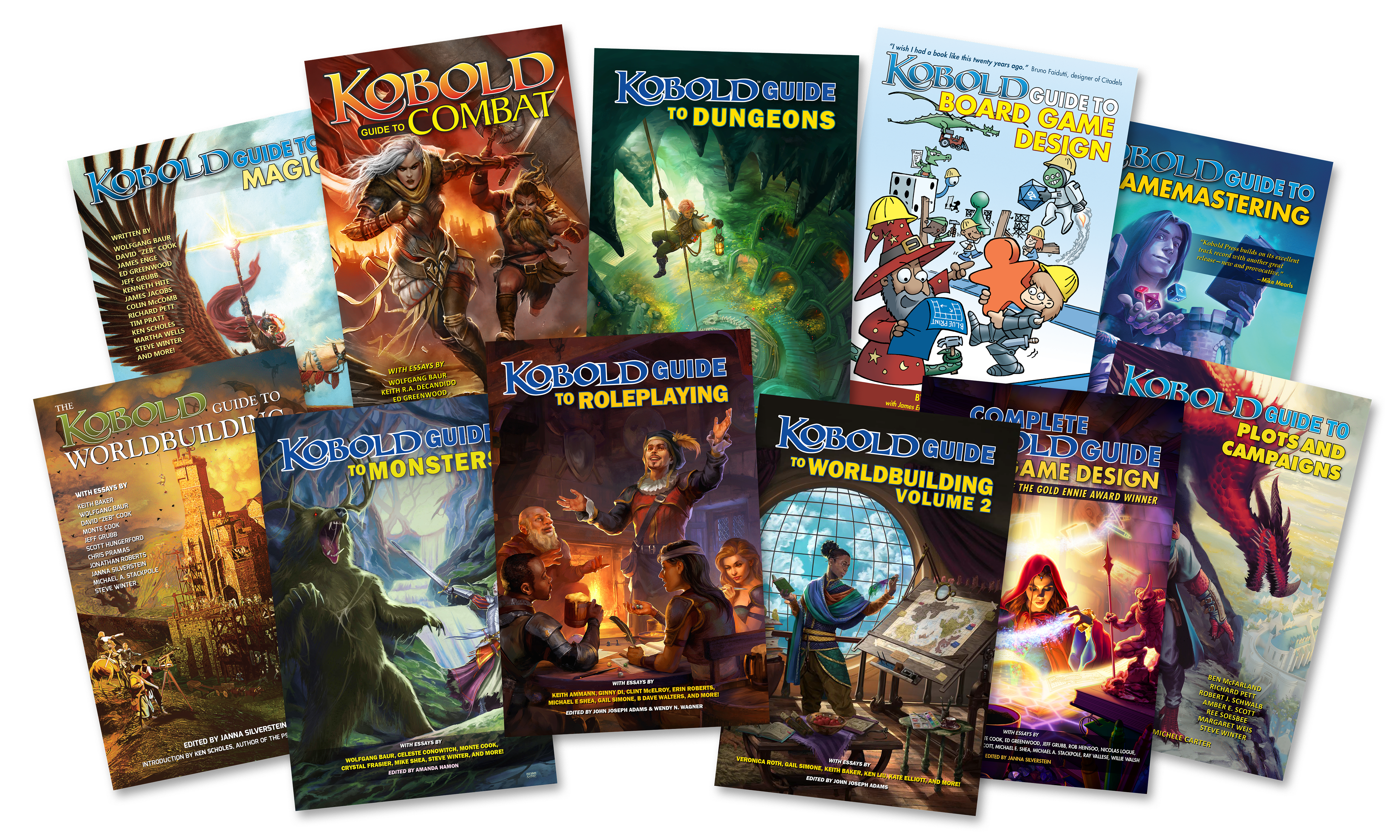Description
Open a Trove of Tabletop Secrets
The multiple ENnie- and Origins-award-winning series from Kobold Press is here, collecting wisdom and practical tips and tricks for tabletop home brewers and gamemasters — and for players and board gamers as well!
These Kobold Guides, include insights and guidance by gaming luminaries including Richard Garfield, Veronica Roth, David “Zeb” Cook, Gail Simone, Mike Stackpole, Margaret Weis, Wolfgang Baur, Keith Baker, Erin Roberts, Ed Greenwood, and dozens more. You get:
- Kobold Guide to Worldbuilding
- Kobold Guide to Worldbuilding Volume 2
- Kobold Guide to Board Game Design
- Kobold Guide to Gamemastering
- Complete Kobold Guide to Game Design, 2nd Edition
- Kobold Guide to Combat
- Kobold Guide to Magic
- Kobold Guide to Monsters
- Kobold Guide to Plots & Campaigns
- Kobold Guide to Dungeons
- Kobold Guide to Roleplaying


Rafael Ruiz Dávila –
Another volume in the magnificent “Kobold Guides” collection, this one dedicated to the art of storytelling is like the rest: a heterogeneous collection of 21 essays written by very different people, from role-playing authors (B. Dave Walters) to influencers (Ginny Di), and even storytellers from other disciplines, like Gail Simone. All of them have contributed their particular and personal knowledge to very diverse topics in the interpretation and development of the GM’s work. The books in this collection never disappoint. Its chapters are small essays or articles, short texts that can be read in a few minutes and contain elements, ideas and sparks that you can adapt to your own narrative. As always, a great purchase.
Frederic Vinhage –
The Kobold Guide to Roleplaying is a little anthology of essays focused on the element of roleplaying and how it relates to our favorite roleplaying games and life in general. Its not intended to be a rulebook, but more of a thought out exploration of the realm of roleplaying in our games. With Twenty-one authors, many of who are recognized icons in the D&D social Media sphere.
Many of the essays are great primers for the new roleplayer to understand some of the finer points of a roleplaying experience. However some of the essays feel forced or ‘mechanical.’ What I mean by that is they feel like they were assignments that the author had to write and they reached for the subject. Not every essay feels like something from the heart.
It is a good collection to read through and find the essays that as a Dungeon Master, perhaps you share with the new player, or the player that needs help with a concept. Or it helps to inspire you as a DM to better your own game concepts.
Some of the essays are intentionally agnostic to the roleplaying games that they are informing, while others lean into the rulebooks for single system, using quotes as the basis of an argument to varying level of success. One piece I was extremely interested in by title turned out to be less than 1,500 words and mostly dressing rather than a dive on the subject with only the last paragraph touching on the subject in the title that drew my interest to the essay.
I really wanted to love this anthology, unfortunately it is about half great well thought out articles and half not so great with either lack of content or mistaking essay for rulebook.
Don’t count it completely out, but read it, and take from it the ones that resonate, but understand, like any collections of writing, you likely will find some articles that you love and want to use as a compass for your roleplaying, and some that will not vibe with you and you will forget pretty quickly. It is worth a look and read, perhaps a great resources for a group of players to peruse between sessions so each person can find the piece that they align with.